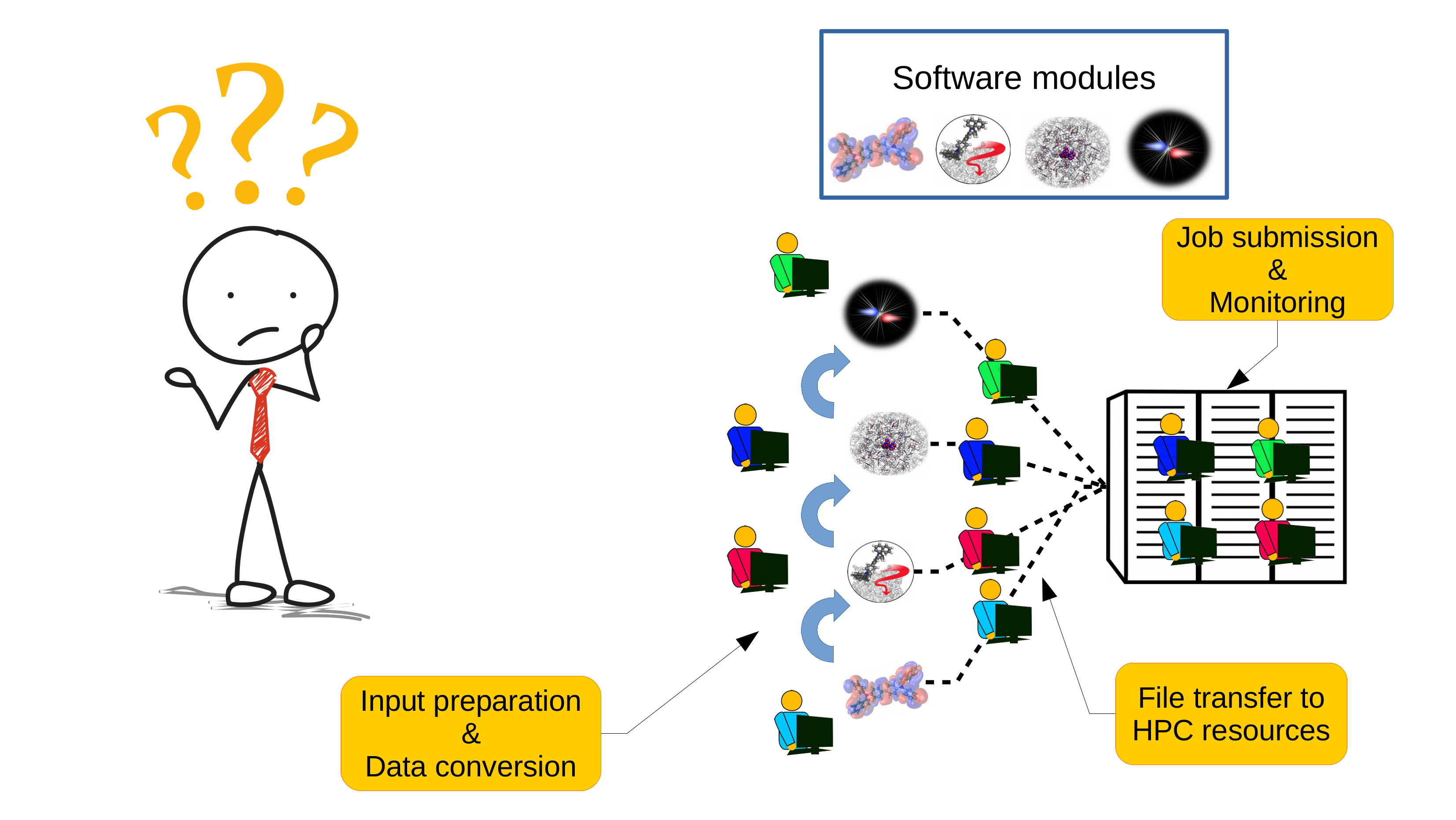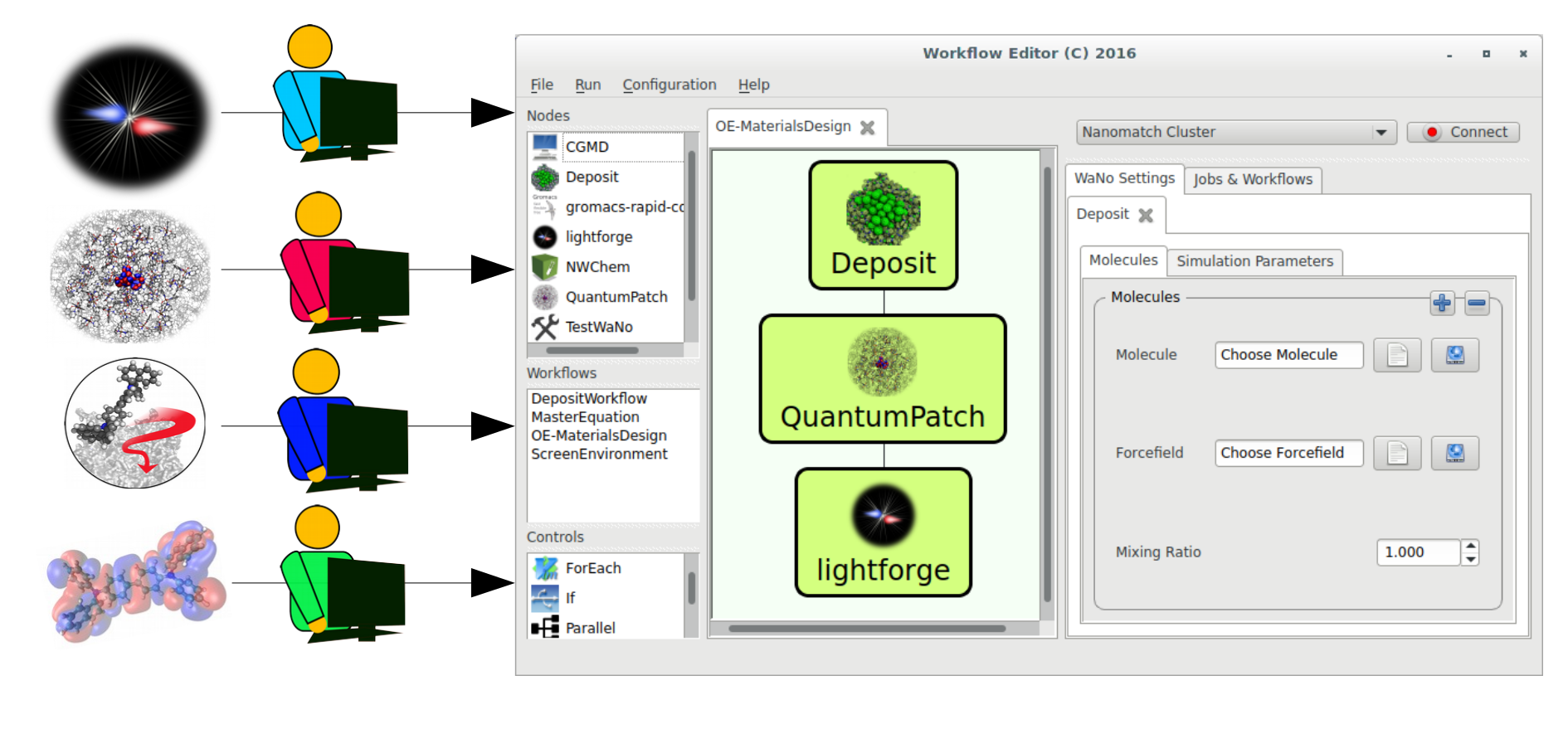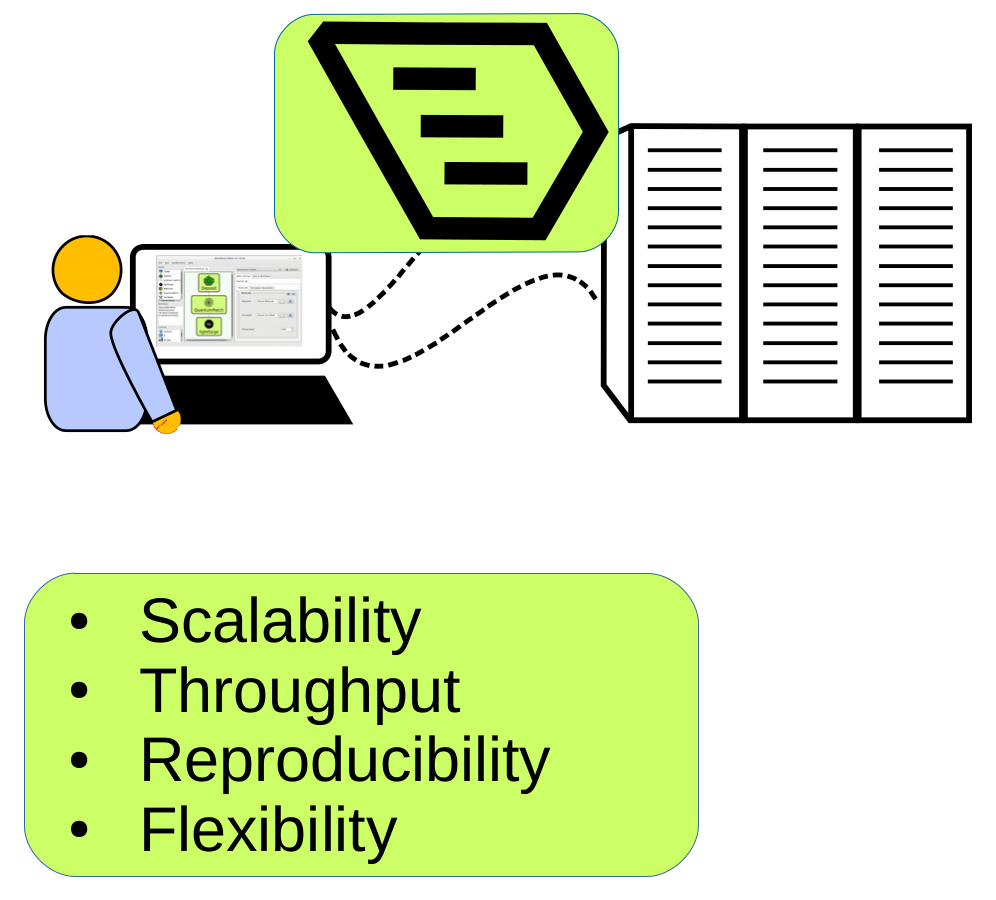
SimStack facilitates the efficient implementation, adoption and execution of complex and extensive simulation workflows and enables fast uptake of modeling techniques for advanced functional and nanomaterials by industry. Within a few hours, complex modeling solutions are rendered into easy-to-use, scalable, marked-ready software products, circumventing time-consuming workflow setup and execution by industrial R&D. SimStack provides a highly flexible drag-and-drop environment that allows quick adaption of existing workflows to develop custom-tailored solutions that meet the end-user’s needs, as well as a graphical user interface for the end-user to automatically execute the workflows on remote computational resources.
Bottlenecks in the uptake of modeling by industrial R&D

Modeling approaches in the development of materials have the potential to increase R&D efficiency by providing understanding of properties and processes and by minimizing experimental trial and error approaches to materials design, thereby saving time and money and allowing short time-to-market. However, the incorporation of advanced materials into the product design cycle require the combination of multiple methods acting on different time and length scales into complex workflows to be executed on high performance computing (HPC) resources. Traditional workflow management demands the hands-on execution of many steps by respective experts, such as input preparation, file transfer to remote computational resources, job submission and monitoring, and the information transfer between the modules. This level of complexity and amount of effort prevents the uptake of modeling methods by industry.
Conquering complexity with SimStack
SimStack overcomes these limitations by separating execution and control of multiscale modeling workflows. The special client server setup eliminates the complexity for the end-user, while providing full flexibility to workflow engineers: Modules from any source, either fully developed commercial tools or academic codes, can be integrated into the SimStack Client within minutes to provide an easy-to-use modeling solution also to non-experts. Multiple modules are connected into complex workflows via drag&drop and relevant simulation parameters are set for each model using the automatically generated GUI. The SimStack Client automatically connects to the SimStack Server installed on remote computational resources and handles file transfer, submission and monitoring of workflows and retrieval of results to the end-user’s Laptop or PC.
SimStack enables rapid prototyping of multiscale workflows by enabling:
|
 |
This poses the following benefits for the end-user:
|
 |